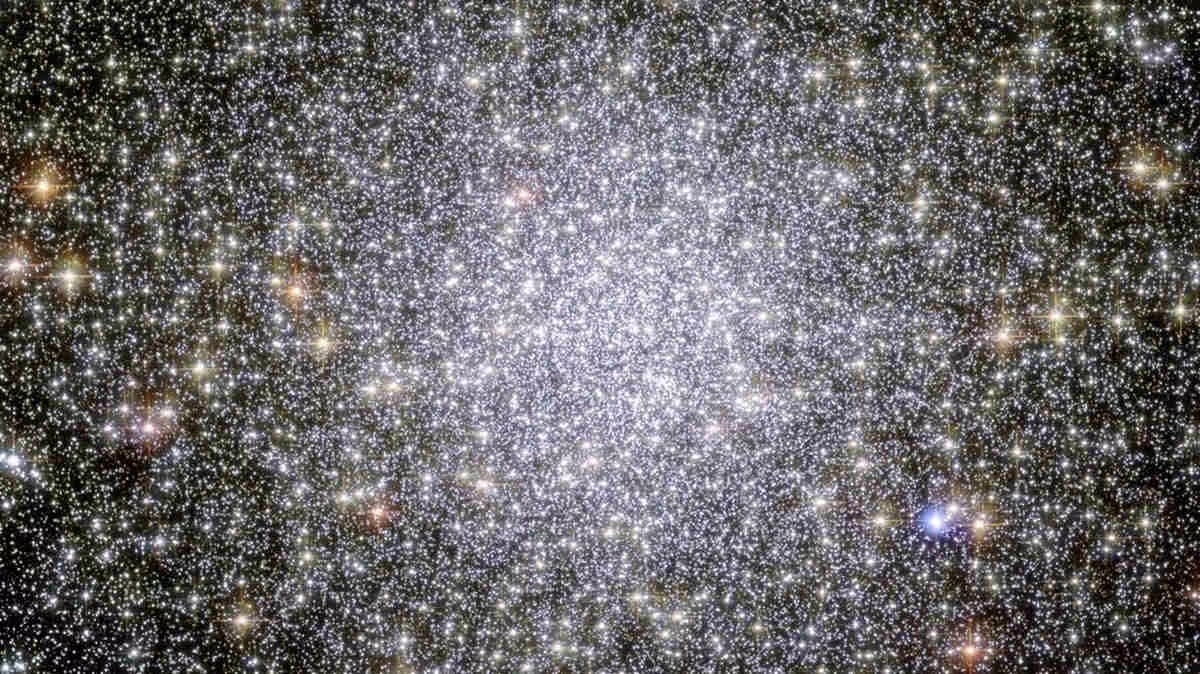17.01.2024

Hubble Space Telescope image of 47 Tucanae. Credit: NASA/ESA (CC BY 4.0).
The most sensitive image ever of a globular cluster – and the deepest, most detailed radio image ever produced by an Australian radio telescope – has thrown up a surprise.
Globular clusters are round collections of stars bound together by gravity, but usually much smaller and less complex in structure than a typical galaxy.

Astronomers targeted the second brightest globular cluster in the night sky: 47 Tucanae.
The research was led by Western Australia’s Curtin University node of the International Centre for Radio Astronomy Research (ICRAR). The team used more than 450 hours of observations from the CSIRO’s Australia Telescope Compact Array in New South Wales.
The results are published in the Astrophysical Journal.
“Globular clusters are very old, giant balls of stars that we see around the Milky Way,” says co-author Dr Arash Bahramian, from the Curtin node of ICRAR. “They’re incredibly dense, with tens of thousands to millions of stars packed together in a sphere.”
Bahramian says 47 Tucanae is one of the largest globular clusters in our galaxy, with more than a million stars and bright, dense core.
Though the cluster was first described in the 18th century, the extremely detailed image revealed something never before seen in 47 Tucanae – a faint radio signal at the heart of the star cluster.
Lead author Dr Alessandro Paduano, also from Curtin University, said there are two possible sources for the signal.
“The first is that 47 Tucanae could contain a black hole with a mass somewhere between the supermassive black holes found in the centres of galaxies and the stellar black holes created by collapsed stars,” Paduano says.
“While intermediate-mass black holes are thought to exist in globular clusters, there hasn’t been a clear detection of one yet.”
The second possibility is that the signal is coming from a pulsar – a rotating neutron star that emits radio waves.
Producing such a high-sensitivity image gives astronomers an exciting glimpse into the future of radio astronomy with construction underway on the Square Kilometre Array (SKA) telescopes in Australia and South Africa.
Quelle: COSMOS

